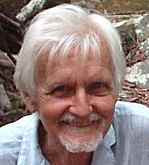
Three days ago, a friend of nearly 30 years died. This friend was a 100% raw foodist, grew much of her own food , and was very active. Amongst her peers she was considered as exemplary in her lifestyle. She was 60 years of age.
This is the story of her passing as I know it. About ten days prior to he death she developed, strong pain throughout her whole body. She then decided to drink only vegetable juices for a few days. As after four or so days no change had occurred, she then decided to drink water only. There was still no change till eventually she was so incapacitated that she was unable to care for herself in any way, and no-one was available to assist her she was hospitalized.
The hospital could find no cause. They were consulting with others worldwide to try to find a solution. One hour prior to her death, she was diagnosed with Lymphoma of the Bone. They claim that it only developed in the last few weeks – that is that it only manifested itself in that time.
For a few weeks prior to her death she had been eating raw cacao beans, which to my knowledge, she had not been doing previously. At the time she commented to a friend that she was not feeling so well and must have over-done it on the cacao beans, and would require to eat lightly for a while.
It is my considered opinion that the eating of the cacao beans, whilst not being the only factor involved, was sufficiently harmful to push her over the edge.
For a further insight into the factors that may well have contributed towards her death at this early age, it might be of interest to note that she was heavily into social drugs for many years of her early adult life, and at one stage had cancer of the lungs, which she successfully survived. She was a single mother, and estranged from her only son, as well as being estranged from her parents . they still being alive. The path she had chosen in life was not an easy one, yet through it all I never knew her to be depressed, or essentially unhappy. I am sorry that I was unable to be with her at this time, as we lived over three thousand miles apart. Her passing was/is a sad loss of a dear friend who was always there to assist whenever needed.
Knowing her, I feel sure she would wish that we should be happy for her, that her suffering was short and brief, and to hold a wake being joyful and happy for having known her, and had the pleasure of those, only too short years.
